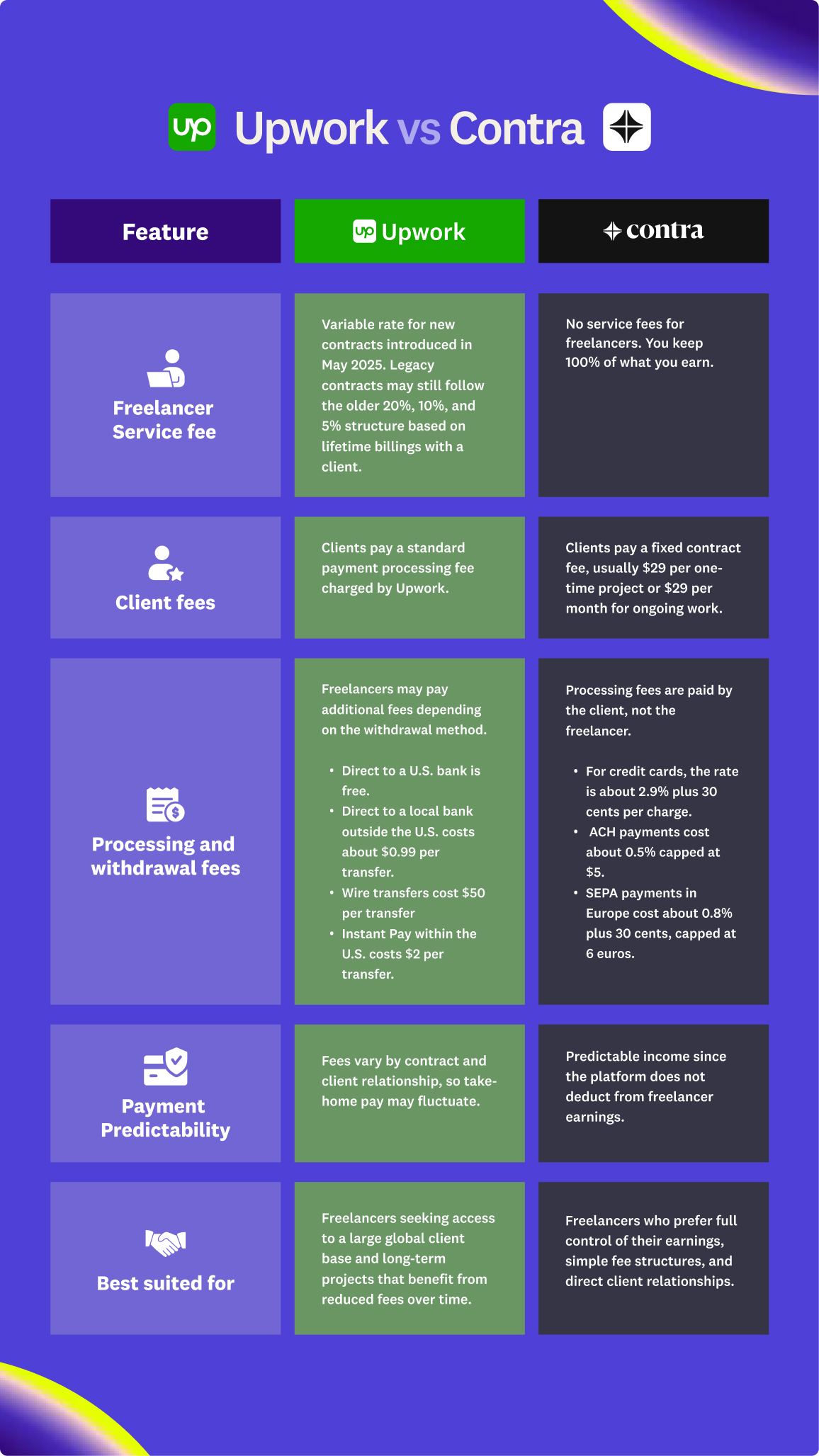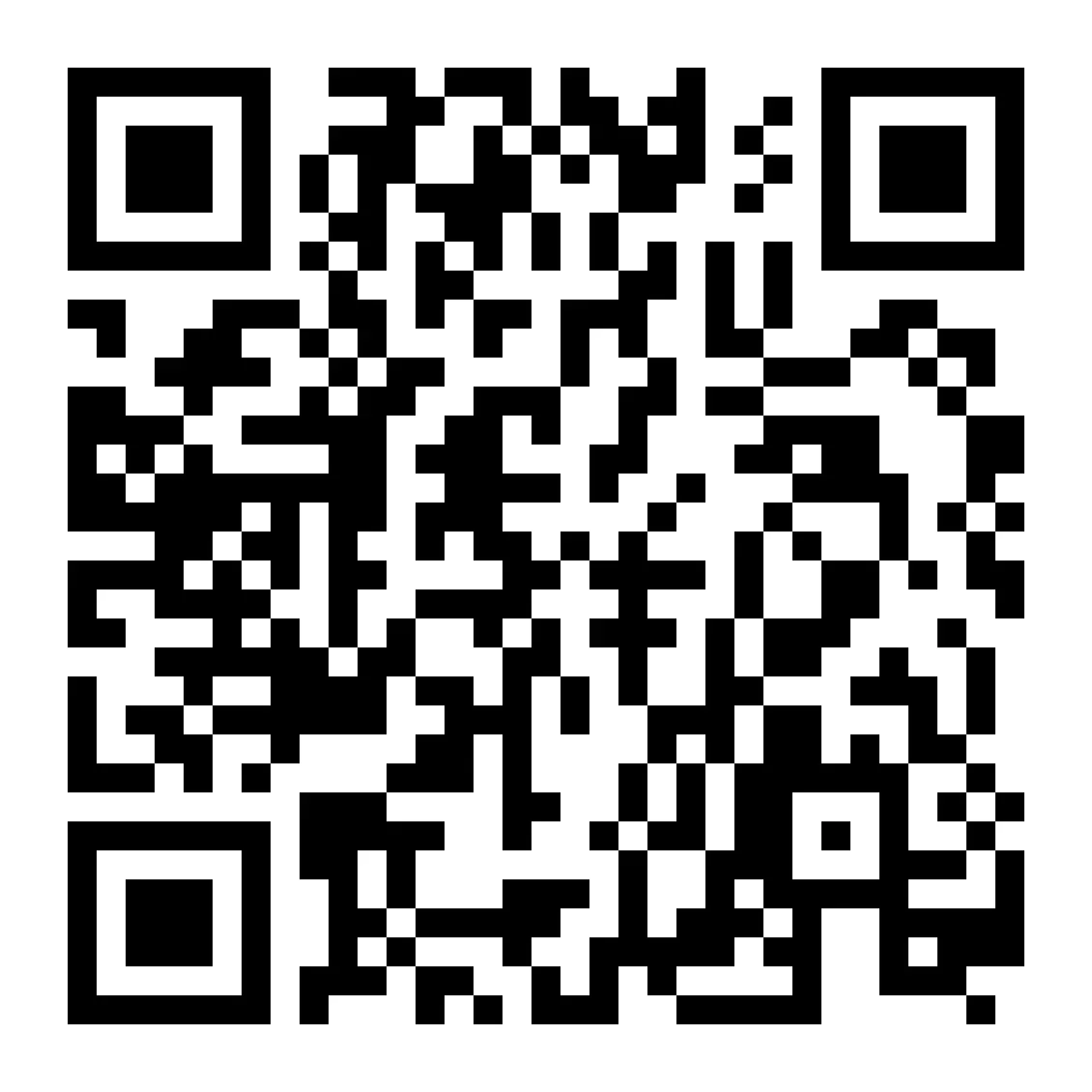.jpg)
Contra vs Upwork: Which Freelance Platform Is Better for You
Hello, Bella here.
Lately, I’ve noticed something interesting happening in the freelance world. Have you noticed it too? It’s not a trend exactly, more like a small shift that happens when people start comparing notes about where they work and why.
Some freelancers are still rooted in Upwork. It feels familiar, structured, and reliable. There’s comfort in knowing that new jobs appear every hour and that if you keep showing up, something eventually sticks. It rewards persistence, even if the competition can be a lot.
Then there’s Contra, the newer name that keeps coming up in conversations. It’s built for freelancers who prefer to create rather than chase. You set up your portfolio, define your terms, and let your work do most of the talking. It’s slower in pace but more intentional in how it connects you to clients.
Both paths can lead to good work. One offers consistency, the other offers freedom. And if you’re trying to figure out which one fits the way you like to work, this breakdown should make the choice a little clearer.
Upwork vs Contra: How Both Platforms Actually Work
For those who are new to the two platforms, let me give you an overview of both of them.
Upwork operates like a traditional freelance marketplace. Clients post jobs, and freelancers apply by sending proposals that include a short pitch, work samples, and their rates. Once a client accepts, the project is moved into Upwork’s workspace, where both sides can communicate, set milestones, and process payments. The platform uses an escrow system, which means funds are held securely until the client approves the work. It is a model built on structure and reliability, making it easier to handle large volumes of projects with clear accountability on both sides.
Contra takes a more personal approach. Instead of browsing job listings, freelancers create digital portfolios that showcase their skills, past projects, and testimonials. These portfolios serve as mini-websites where potential clients can discover your work and reach out to you directly. Once both parties agree on the details, Contra handles the contracts, communication, and payments within its dashboard. The platform is designed to make freelancing feel like running your own brand, with a greater focus on attracting the right kind of clients.
In short, Upwork is built around applying for work, while Contra is built around being discovered for it. Understanding this difference helps you decide which platform aligns better with your style of freelancing and the kind of opportunities you want to attract.
Now that we know how both platforms work, let’s take a closer look at how they compare across key aspects of freelancing.
Finding Work on Upwork vs Contra
On Upwork, finding work is a proactive process. Clients post detailed job listings, and freelancers submit proposals tailored to each opportunity. The platform allows you to filter jobs by category, client history, budget, and more. Success often comes down to writing compelling proposals, highlighting relevant experience, and maintaining a high profile score. New freelancers may need to invest time in building credibility through initial projects, feedback, and ratings. The system is designed to give persistent freelancers a steady stream of opportunities across almost every industry.
🔗ICYMI, here’s our guide on how to get freelance jobs on Upwork.
On Contra, the approach is different. Freelancers create portfolios that act as living resumes, highlighting past projects, skills, pricing, and client testimonials. There are no proposals or bidding wars. Instead, clients browse profiles and reach out directly to freelancers who fit their needs. This model favours freelancers who invest in their personal brand and presentation. Being discoverable relies on clarity, the quality of your showcased work, and how well your portfolio communicates your capabilities. The platform is particularly suited for creatives and professionals who want to attract clients based on their demonstrated expertise rather than competing in a volume-driven application process.
🔗 Also, read our content on how to get clients on Contra.
Fees and Earnings on Upwork vs Contra
Upwork charges freelancers a service fee on every contract. In the past, the platform used a tiered structure that took 20% for the first $500 billed with a client, 10% for total billings between $500 and $10,000, and 5% beyond that. This approach rewarded long-term client relationships but often reduced earnings for smaller, one-time projects. Since May 2025, Upwork has introduced a variable freelancer service fee for new contracts. The exact rate now depends on factors such as job type and market conditions, while older contracts may still follow the previous structure. Freelancers may also pay small processing fees when withdrawing funds, so it is important to factor these costs into proposals when calculating desired income.
Contra takes a different approach by not charging freelancers any service fees. Instead, clients pay a fixed contract fee, usually $29 for one-time projects or $29 per month for ongoing engagements. This allows freelancers to receive their full project payments without deductions from the platform. Standard payment processing costs may still apply depending on the chosen payout method, but Contra’s model keeps income management simple and predictable.
Here are the differences at a glance

Whichever platform you choose, you can receive your payments easily with Raenest (formerly Geegpay), be it in USD, GBP, or EUR. Here are our fees.
Beyond payments, Raenest also helps you grow your wealth and manage your finances better, offering virtual dollar cards you can use to pay for subscriptions, tools, or other services globally. It’s everything you need to manage your freelance income in one place, built for professionals who work and earn across borders. Get started on Raenest (formerly Geegpay) today.
Payments and Payouts on Upwork vs Contra
On Upwork, payments are handled through an escrow system, which adds security for both freelancers and clients. Once a project or milestone is approved, the funds are released to the freelancer’s Upwork account. Withdrawals to a bank account or payment service can take a few business days, depending on your chosen method. This system ensures that clients cannot withhold payment once work is completed, while also protecting clients against incomplete or unsatisfactory work.
On Contra, payments are straightforward. After a project is completed and both parties agree, the payment is released directly to the freelancer’s connected account. The platform supports multiple payout options, including bank transfers and digital wallets. Contra’s payment process is designed to be quick and transparent, which can help freelancers maintain a smoother cash flow, particularly when working with multiple clients or smaller projects.
Workflow and Tools on Upwork vs Contra
Upwork provides a comprehensive set of tools for project management. The platform includes messaging, file sharing, time tracking for hourly contracts, milestone management, and reporting. These features help freelancers manage complex or ongoing projects, especially when collaborating with multiple clients simultaneously. Upwork also integrates with external tools such as Zoom or Slack, allowing freelancers to coordinate work without leaving the platform.
Contra offers a simpler, more focused workflow. Its dashboard emphasises clarity and ease of use, providing messaging, contracts, payment tracking, and project management in a clean interface. While it does not include advanced time-tracking or extensive reporting features, it supports freelancers who want to manage projects efficiently without additional administrative overhead. The focus is on maintaining a polished, professional workflow that aligns with creative and knowledge-based work.
Community and Opportunities on Upwork vs Contra
Upwork’s scale gives freelancers access to thousands of new projects across diverse industries every day. This broad range of opportunities makes it easier to find work in almost any field. The platform’s size also fosters a highly competitive environment, which encourages freelancers to improve proposals, skills, and ratings continuously. Upwork also offers programs and certifications that can help freelancers stand out, particularly for those seeking long-term, stable client relationships.
Contra, by comparison, has a smaller, more curated community. It emphasises creative and knowledge-based work, including design, writing, marketing, and development. The platform focuses on matching freelancers with clients who value their specific skills and style. This creates a more personal and professional environment, where networking and discovery happen organically through portfolios. With this, freelancers can build relationships with clients who are already interested in their approach, which often leads to more meaningful and aligned projects.
As we wrap this up, it’s clear that the freelance world is becoming more flexible than ever. Freelancing keeps changing, and that’s the beauty of it. You don’t have to choose one path or one platform. Many freelancers use both, finding clients on Upwork while building deeper connections on Contra. There’s nothing wrong with that. When you’re growing a business, there’s really no such thing as too many platforms, only more ways to show up and get paid for your work. In the end, the right platform isn’t the one with the most clients. It’s the one that lets you work on your own terms. Whichever path you take, you can receive your payments seamlessly with Raenest (formerly Geegpay), your global money partner.
P.S.: Get unlimited access to free content creation, remote work, and freelancing resources you won’t find anywhere else. Sign up for our bi-weekly newsletters.





